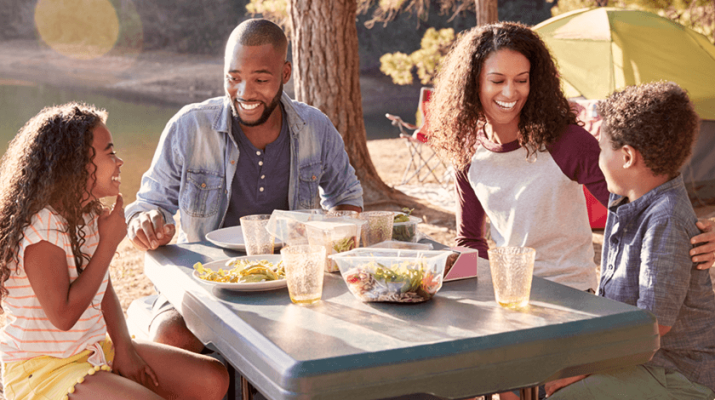Picnics and cookouts raise the risk of issues such as cross contamination and food-borne pathogens. Follow a few simple rules to avoid the problem
By Deborah Jeanne Sergeant
Now that it’s picnic season, why not brush up on food handling tips to ensure your food is safe?
Picnics and cookouts raise the risk of issues such as cross contamination and food borne pathogens because we’re cooking and handling food outside the routine environment of the kitchen.
“Ninety percent of all food borne illness is preventable,” said Nancy Rissler, instructor and proctor for ServSafe at Onondaga Community College.
She said that grilling safely means using a meat thermometer to ensure the meat reaches the proper temperature — not relying on color or a prodding finger. Cook beef, pork, veal, fish, shellfish and lamb to 145 degrees F, ground meats to 160 degrees F, and all types of poultry to 165 F. Always insert the thermometer in the thickest portion, away from the bone.
She also said that picnickers should use separate utensils while grilling.
For example, if you place cooked meat on the same platter that held it before it was cooked, the prepared food can become contaminated with bacteria. Or if you moved raw meat with the same set of tongs that you use for serving it. Or if you marinade raw meat and later use the marinade to baste the meat as it cooks, you spread bacteria all over it.
Foods that can cause cross contamination, including raw steak, chicken, ground meat and seafood.
By preparing as much as you can at home, you can help prevent many cross contamination issues.
Rissler said that the “danger zone” of perishable foods is between 40 and 140 degrees F. That’s when bacteria rapidly multiply. Rissler advises testing with food thermometers throughout a long picnic to ensure food stays at the right cold or hot temperature.
How you transport and serve cold items can affect their temperature as well. Begin with cold foods that are already cold. Don’t try to rely on the cooler to chill foods.
Keep all the drinks with the cold salads in one cooler isn’t a great idea, since constantly opening the cooler to retrieve drinks reduces the temperature inside.
“It will jeopardize the stuff you want to keep cold,” Rissler said. “Put out small containers for people and refill them frequently, instead of one big macaroni or potato salad. Keep the backups on ice.”
Lisa Jones manages the food program for Cayuga County Public Health Department. She recommends packing a cooler only with pre-chilled foods.
“Rinse cooked pasta with cold water and chill it before adding mayonnaise,” she said.
Don’t count on the cooler to chill foods.
Jones said to use freezer packs instead of ice at the bottom, followed by raw or marinating meat in sealed containers, followed by other foods on top, which can prevent any meat drippings from leaking into ready-to-eat foods.
“Pack the condiments with salads, separate from meats,” Jones added.
It can also help to fill coolers up to the brim.
“The more cold things in there, the colder it stays,” she said. “You could throw in a roll of paper towels.”
Produce should always be washed before it’s eaten. If you’re bringing along a melon to slice, don’t forget to wash it first; otherwise, every cut of the knife draws bacteria inside, to the flesh. Cut it on a clean surface.
Also bring along table cloths or a means to clean tables, plus hand sanitizer. Jones said that a small container dispensing warm, soapy water can also help with keeping clean.

